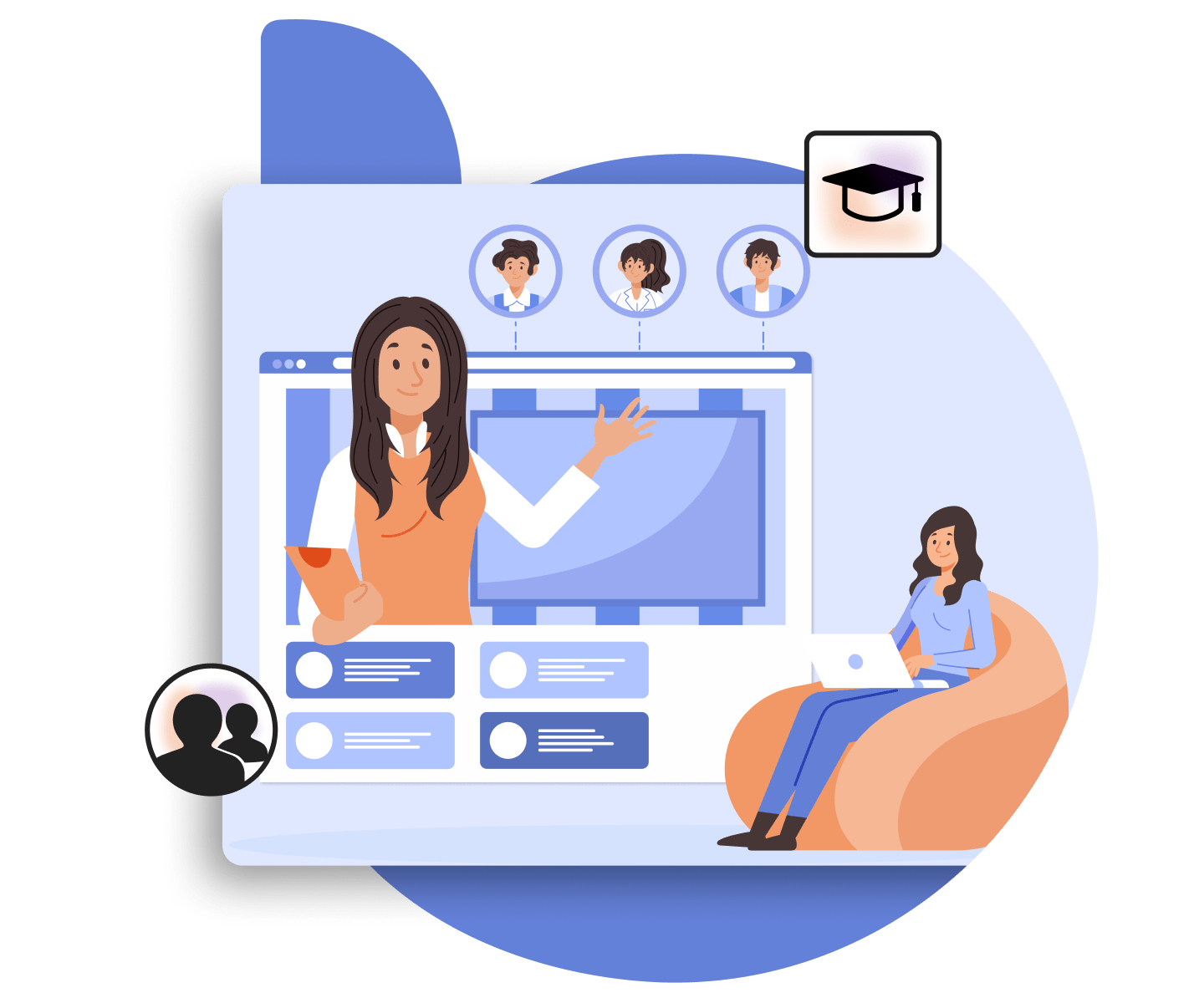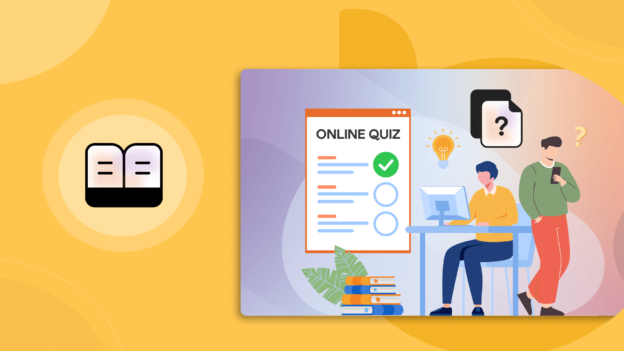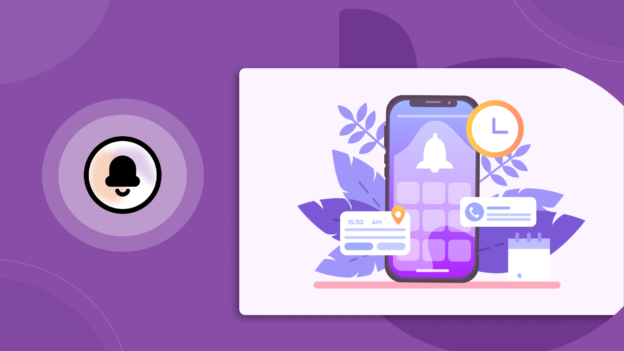At BuddyBoss, we have a huge resource to guide you to start your course or your membership community. After several videos and blog posts, we realized there was one topic that needed to be separately covered-
What are primary considerations in identifying a target audience?
As a former course creator myself, this task is vital to ensuring your courses eventually make a strong revenue, especially in the long run.
Identifying your ideal target audience is key to the success of your online course. The identification goes beyond analyzing factors like age, profession, and interests to tailor your content and marketing strategies.
This post guide will explore how to identify target audiences for your online course so that your users not only buy your course but also complete the course.
But before we dive deeper into the identification of target audience, let us first look at WHY this is such an important activity because course creation does not start UNTIL you have carefully identified and targeted your audience.
Why Research the Target Audience for Online Courses?

Researching the target audience for online courses is important for several reasons:
- Tailored Content Creation and Customization: Knowing your audience allows you to shape your course content to meet their specific needs, interests, and learning styles. This relevance increases the value and appeal of the course to your audience.
For example, when Salman Khan, the founder of Khan Academy, began tutoring online, he had difficulty teaching his audience in real time due to the audience’s different time zones. He was in the US while his students, who were mostly his relatives at that time, were located in Bangladesh. So to address the problem his audience was facing, he adjusted his teaching by initially uploading his first pre-recorded courses on YouTube so his audience could access them anytime. Many more adjustments followed later as he received funding to improve his course.
So as you can see, Khan took into account his audience’s needs which helped to start Khan Academy as we know it today simply because he was able to identify and customize his courses for his global audiences. - Effective Marketing Strategies: Finding out who your audience is helps to better understand the personality, age, perception, and so on. This will later help you to create effective marketing campaigns to promote your courses through emails and social media. Doing this will result in marketing efforts that resonate with your audience, thereby increasing enrollment and engagement.
For example, Devslopes, is an online course platform for learning how to code. This eLearning platform actively uses Instagram to promote its courses by publishing humorous content on the struggles of programming. This is because most of their audiences are young adults who are often alone in their journey to start a career in the tech industry. Their creative marketing effort on Instagram tends to be short in length but highly effective in driving traffic to their main website where users enroll in their courses to learn how to code. - Improved Learner Engagement: Knowing your audience helps to create the course materials that are relevant to the audience. Your audience will thus feel more engaged to complete the course which will lead to higher completion rates and better learning outcomes.
Salman Khan, as we have mentioned before was hugely successful as his teaching methods towards his audience were very personalized. He taught in real time and would respond to feedback. Knowing this simple act of being responsive to his audience made Khan start a learning platform that had a feedback section where other course instructors would assist users by responding to comments and even providing answers to quizzes. - Resource Optimization: When you research your audience, you will know which resources you need to allocate more efficiently to create your course. It prevents the spreading of efforts too thinly across too broad an audience, which might dilute the effectiveness of the course. In addition, knowing your audience will help you to decide how much you should invest or spend to create your course.
One of the most popular Computer Science courses on YouTube is Harvard University’s CS50 YouTube channel. The university initially conducted this course inside a classroom But when the university looked at what are primary considerations in identifying a target audience, they found out that students interacted better with their course when they made their courses highly interactive. Today the course is taught inside a theater with a whole team employed to record and publish their computer science course at edx.
I am not saying you must involve expensive resources to create your course but what I am saying is that Harvard chose to do this as they wanted to maximize their audience number by going beyond a regular classroom. Therefore, knowing your audience will help you adjust your course according to your audience preferences which will eventually lead to quality revenues.
- Feedback and Improvement: A well-researched target audience can provide valuable feedback, leading to continuous improvement of the course.
For example, Harvard’s Computer Science course previously only covered programming. However, due to how fast the audience is in touch with updated technology, the university today has added courses on cyber security and artificial intelligence. So the courses are very much updated and in touch with reality due to the feedback the university receives from the audiences. - Building a Community: Targeting a specific audience helps create a sense of community among learners. Participants with similar interests and goals can interact more meaningfully, enhancing the learning experience. Having a community helps to bring traffic to newer courses as your community grows. But remember that to build a community, you must constantly target and market to find newer relevant target audiences for you to reap the benefits of building a community.
In addition, you must also be able to manage and address your community. This process is not simple at all.
For instance, the comments section of Harvard’s CS50 course is very rich with comments and discussions. Unfortunately, they do not have a system that can address or organize every feedback.
But you as a course instructor, can have an automated system to build a community around your courses. For this, you will need a website that can allow you to not only manage and create a membership community but also list your courses and exclusive content such as live sessions or a special E-book. - Long-Term Relationships: By consistently meeting the needs of a specific group, you can cultivate long-term relationships with your audience, leading to repeat enrollments and referrals. As discussed before, you need to have a community membership platform to be able to have a healthy relationship with your audience. Otherwise, it will be a challenge to address every comment and feedback. Once you have a membership platform, you will be able to efficiently manage long-term relationships with your audience who will support your e-learning platform by sharing your courses and recommending your courses to other people.
- Competitive Advantage: Researching your audience allows you to create unique courses that fill specific niches, setting you apart from competitors who might offer more generic content. If you have a membership platform, you will know your audience to create courses that are needed by your audience. So knowing your audience will give you a sharp edge over other course creators as your courses are more in line with your audience.
Now that we know the significance of the identification of target audience, let us now look at what are primary considerations in identifying a target audience. This is another way to find your target audience. There are several ways to do this.
5 Steps to Identify Your Ideal Target Audience

There are several ways you can identify your audience for your coaching business. There is no strict way to find out the right audience. We have found a total of 5 steps you will go through to find out who would most likely be your target audience
1. Define your course topic

The first step to finding out who would most likely be your target audience is to first set your course identity or your course topic.
But with a myriad of subjects and specializations to choose from, how do you pinpoint the right course topic?
The best course topics often stem from a combination of your knowledge and enthusiasm. You can also set a course topic by setting your niche area of interest. Every niche will have an audience with different expectations and perceptions.
This will not only make the course creation process more enjoyable but also help magnify those who have the potential to be your target audience.
For example, tech-based topics will have an audience who will expect lots of screen-recording of the tools you will use to show your tutorials.
Once you have set the course topic. You will be able to zoom in on your audience’s attributes. More of this will be discussed in the next step.
2. Set the basic attributes of your audience

After setting the course topic, I promise you that you will now be able to better magnify your audience’s attributes such as their skill level, expectations, demographics, choice of language, and so on.
For example, if you set a course topic on knitting, then your course will generally attract an audience who stays home. The gender of your audience may most likely be elderly women.
You can further define your audience asking yourselves questions about this audience who want to learn how to knit. Here are some questions below:
-What is their skill level? Are they a beginner or advanced user?
-Why do they want to learn knitting? As a hobby or for making money?
-What is their expected outcome from the course?
-In what language should I conduct my knitting in?
As you ask yourself these questions, you will be able to better define your audience’s requirements for your course.
Once you have asked yourself these questions, you will be able to better understand who your audience is likely to be and who you will be working with.
Then there is the issue of where your audience is located.
Although your audience is going to be all online, you will need to find out where these potential audiences commonly hang out.
Is it Instagram? Youtube? TikTok? Quora? Reddit?
Many influencers and course creators answer questions based on their niche on platforms like Quora, Reddit, and even the YouTube comments section. After answering the questions or making a comment, the course author provides the link to their course to ensure these potential users become their customers for their course.
By finding out where your audiences hand out, you minimize the need to focus on every social media platform. This makes communication and the marketing of your efforts
But the audience research does not end here. There is still more research to be done. So Let’s move to the next step.
3. Conduct online market research for your course topic

When researching what are primary considerations in identifying a target audience, you need to investigate the online market for your topic. This will now be your third step.
Below are some tips on searching online for your potential audience.
- Conduct Keyword Research: Use tools like Google Keyword Planner to understand what potential students are searching for online. This can give you an idea of the popularity of your course topic and the specific aspects people are most interested in.
- Analyze Trends and Reports: Go to Google Trends and do a thorough search on your course topic. This will take a while but it will reveal a great deal about how interested your audience will be in your course.
- Leverage Analytics Tools: If you have a website, blog, or any social media channel where you are already posting content related to your course topic then you can use analytics tools to understand the behavior of your visitors. This can offer insights into your course topics that resonate with your audience.
- Review Feedback on Related Content: If you have previously published content related to your course topic (like blog posts, videos, or webinars), review the feedback and questions you received. This can indicate areas of high interest or confusion that your course could address.
Lastly, if you already are using a membership platform where you have a following, you can conduct a survey online to your followers to find out if there is a demand for your planned course. You can also do the same on social media. There are many active groups on social media related to your targeted topic. The data will reveal raw insight into your audience’s interest in your future course. This approach requires you to first seek permission from the admin of the group.
Note: Your survey should include a questionnaire on the audience’s interest in your course topic such as their skill level in a topic, their eagerness to enroll in a course, their occupation, education, career plans, existing skills, and so on. Make sure you ask them what they’re looking for in a potential course, what they like about existing courses, and what improvements they wish to see in a course topic.
4. Research your competitors

Now that you have done your online market research. It is now time to research the audience of your competitors. Start by identifying courses that are similar to the one you plan to offer. These could be courses that cover the same subject matter or target a similar audience.
Udemy, YouTube, Coursera, and Pluralsight are some of the most popular courses available out there to research.
Search these course sites and look at the content and structure of these courses. What topics do they cover? How are the courses organized? This will give you insights into what potential students might expect or be interested in.
You can browse through the course’s profile such as the comment section, the review section, the ratings, and even the discussion section. These sections can reveal a great deal about who the audience is, what the students appreciate, and what they feel might be lacking.
Published courses furthermore provide a snapshot of the latest trends in your industry. This will help you anticipate changes in student interests and needs. When looking at published courses make sure you get an idea of how much you should charge your audience. So pay attention to how competitor courses are priced.
Are they offering one-time payments, subscriptions, or free trials? Also, note any discounts or special offers that seem effective in attracting students.
We have a full post on how to price a course. So be sure to check the blog to know more about pricing a course.
5. Last Step: Create and Publish Your Course

Once you have found out what are primary considerations in identifying a target audience such as their needs, online location, preferences, and learning styles – you can start designing a course that speaks directly to them. This involves not just the content itself, but also the delivery method, language, and examples used, all tailored to resonate with your audience.
When you’re ready to publish, it’s important to choose a website that lists all your courses and allows your audience to interact with each other including yourself.
Starting a course site from scratch is time-consuming. At the same time, publishing a course on course sites like Udemy and Coursera may result in you losing your audience to your competitors as such sites will always have a course better than yours.
Therefore it is better to choose a ready-made course site with a membership platform to organise your audience. Check out the BuddyBoss site to instantly start your course site. No need to design the site, it is all done for you. You even get a fully developed mobile app so your learners can learn on the fly. Having a mobile app is a big source of traffic and revenue as it allows your audiences to learn anywhere and at any time.
FAQ on Identification of Target Audience

- What Are The General Preferences of My Audience?
Depending on the niche, you can customize how you want to deliver your course.
Some people prefer real-time course delivery. This option tends to be on the costlier side which means you can charge more for your course. Fitness-based courses tend to teach health and fitness in real time by guiding several learners at the same time.
Others may prefer pre-recorded lessons which is the most common way to publish a course. Another way to appeal to your audience is to have a hybrid course-it is approach to deliver your course in both real-time and by using pre-recorded sessions. If you would like to know more about using videos in your course you can check out this blog on making a training video.
- How Can I Analyze My Competitors To Research My Audience?
You can take a look at your competitors to see who their audiences are. Check out the rating and comment sections for courses on Udemy, YouTube, and even Amazon.
These sections are a gold mine to find out who your audience is going to be for your niche.
You can also watch the trailer of your competitor’s course to find out who the course is meant for.
- How to Identify Target Audiences for eLearning?
To identify target audiences for course creation, begin by defining learner characteristics such as age, profession, and interests. Then conduct market research as described above through surveys and interviews to understand their learning preferences and goals. Remember, to observe competitor courses to see who they target.
You can use social media and forums to gauge potential learners’ interests.
Finally, test your course concept with a sample of your target audience by publishing on a course platform.
4. Can I have more than one target audience for my course?
Yes, it is possible to have multiple target audiences, especially if your course covers a broad topic. But, it’s crucial to segment these audiences and tailor your content and marketing efforts to suit each segment’s specific needs.
5. What are some common mistakes in identifying who would most likely be your target audience?
Common mistakes include making assumptions without data, targeting too broad an audience, not considering the audience’s specific needs and challenges, and failing to adapt to changing market dynamics.
6. What are the primary considerations in identifying a target audience for making 6 figures when selling courses?
To be able to make a positive income you should fully understand the audience’s specific needs and interests, their ability to afford the courses, their preferred learning styles, and identifying the channels through which they are most likely to engage.
Also publishing just one course is not enough, you should keep publishing and marketing your courses as this will better your chances of making six figures. There is more that you need to do when making 6 figures for a course so check out this post on The Top 10 Features Of A 6 figure Course Experience.
Conclusion
When finding out what are primary considerations in identifying a target audience, you should follow the five steps mentioned above. The process described above is thorough and may take a while. But the raw information you get minimizes making a loss as it reveals who would most likely be your target audience
If you feel your target audience is too small, do not be alarmed. If you were to find out how little interest there is for your new course after your course publication then you will make a loss for your coaching platform. So move on to another course topic and start the same process described above.
However, at the same time, you also need to avoid spending too long in the identification of the target audience. This process should take a maximum of 3 days if you want to be thorough in your research.
Yes, you need to know who your audience is. But you need to do efficient research and start developing your course. Then, after publishing your course, you can start marketing your course.
Once you have reached out to your audience with your ready-made course, you will be intimate with your learners through their ratings, comments, and the exercises you prepare for them.
Hopefully, through feedback from your audience, you will be able to develop better courses in the future.












